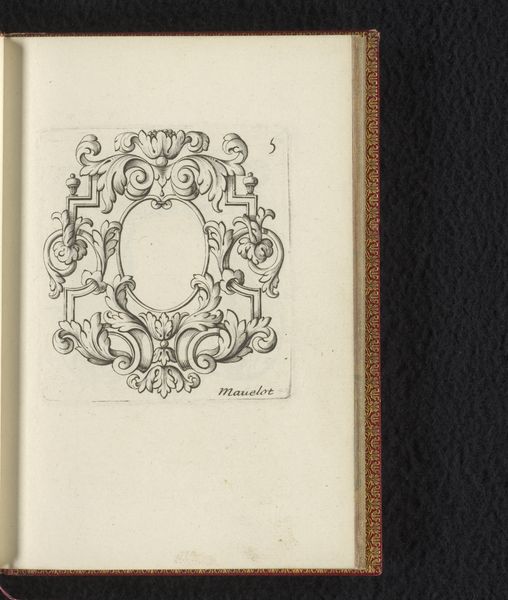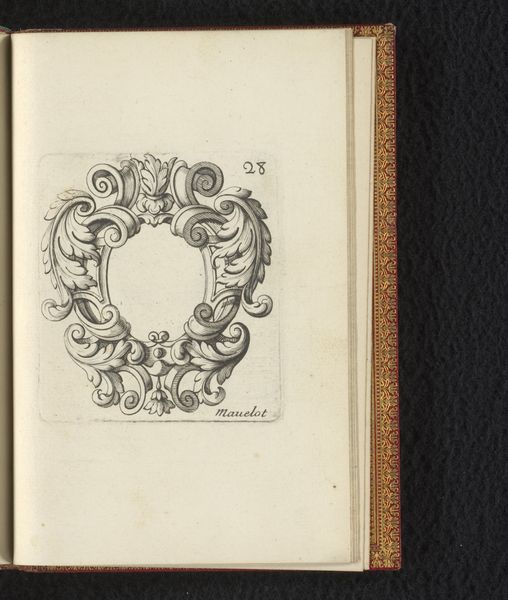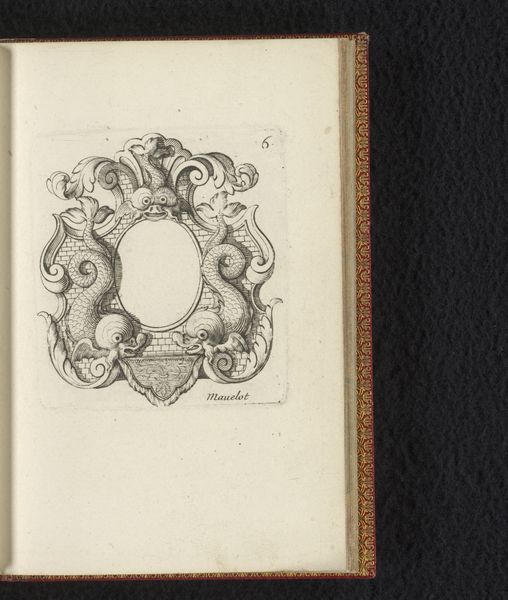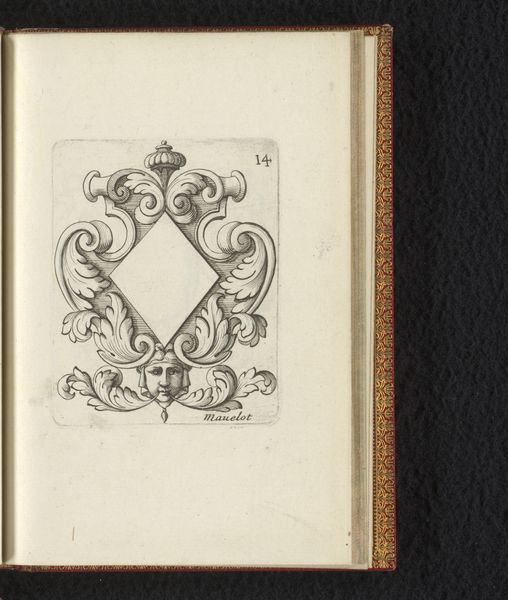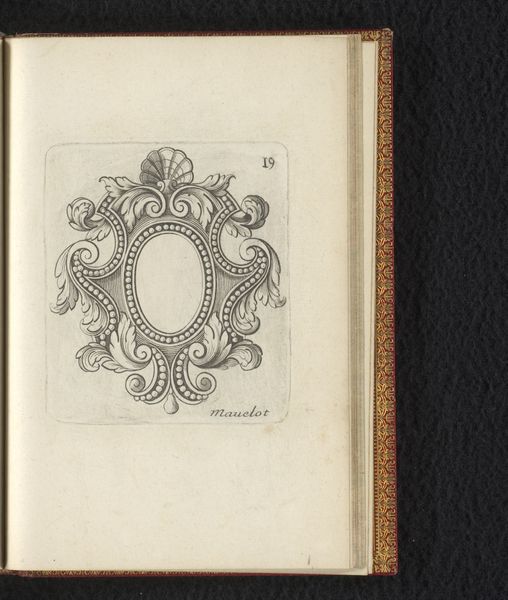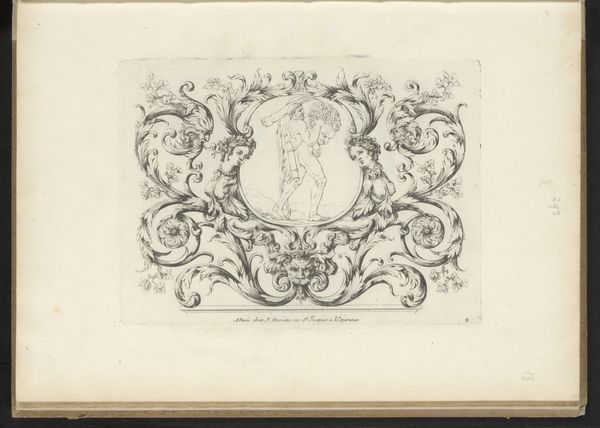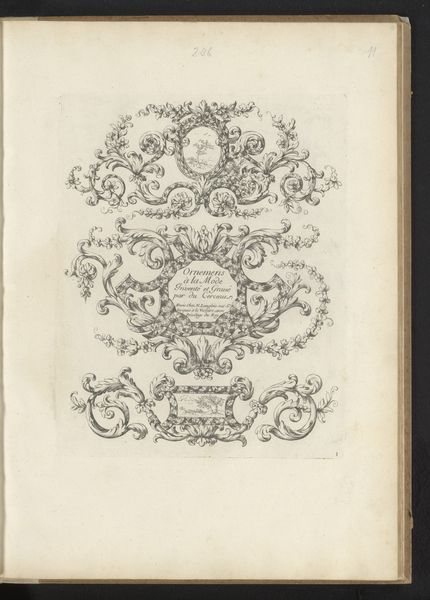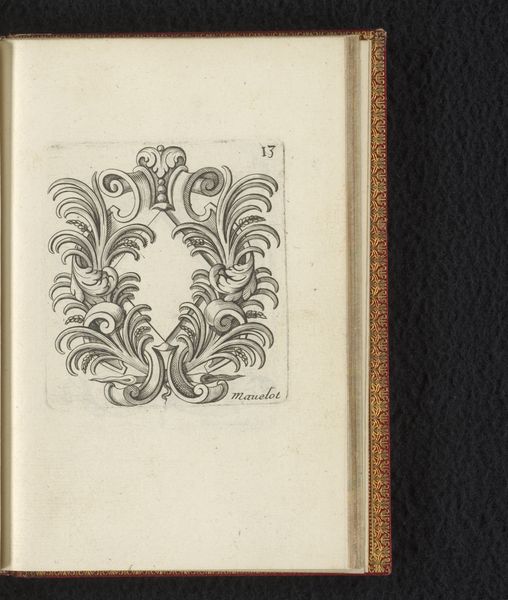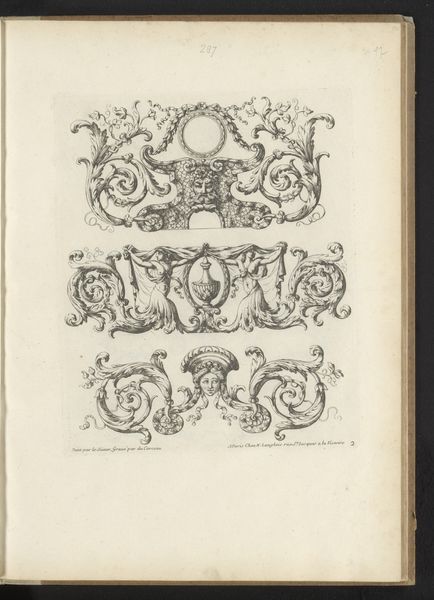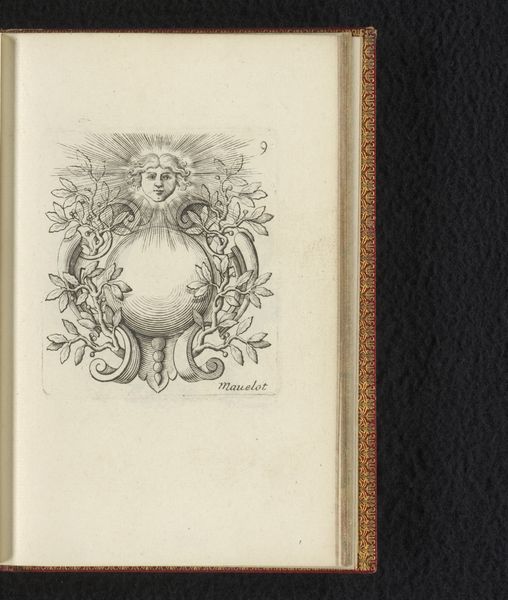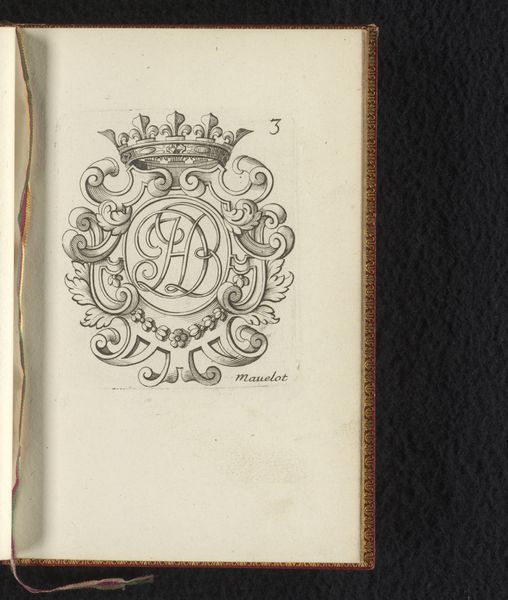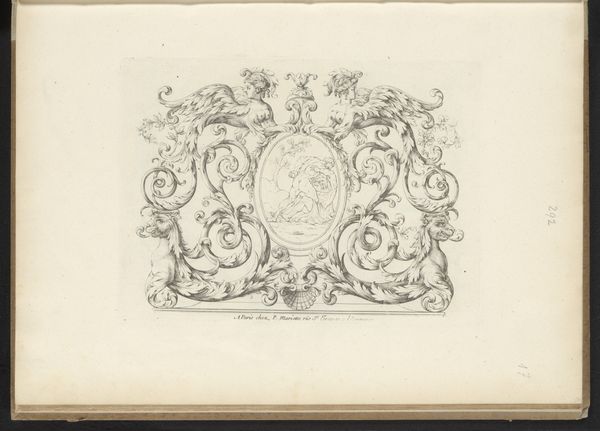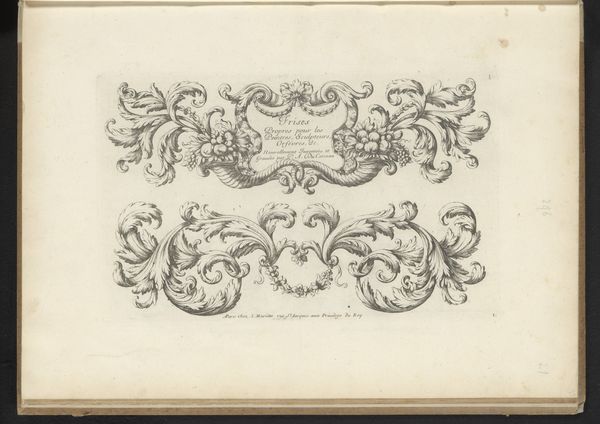
print, engraving
#
baroque
# print
#
form
#
coloured pencil
#
line
#
decorative-art
#
engraving
Dimensions: height 76 mm, width 65 mm
Copyright: Rijks Museum: Open Domain
Charles Mavelot created this cartouche with two mascarons sometime between 1680 and 1742. This design comes to us from a period when French art was heavily influenced by the court of Louis XIV, with its emphasis on grandeur, order, and classical motifs. Mavelot’s cartouche, intended to frame an inscription or image, would have been right at home in that environment. The symmetrical arrangement, the stylized acanthus leaves, and the classical masks speak to the high value placed on decorum and inherited forms. These cartouches were not simply decorative; they were also statements about status and taste. The ability to commission and display such designs was a sign of wealth and sophistication. The publication of prints like this one helped to spread these aesthetic values beyond the court, influencing design and taste across a wider social spectrum. To understand the image better, we might turn to period treatises on design and architecture, or to inventories of decorative arts from the time. These resources help to reveal the social life of images, reminding us that art is always embedded in a specific time, place, and set of institutions.
Comments
No comments
Be the first to comment and join the conversation on the ultimate creative platform.
